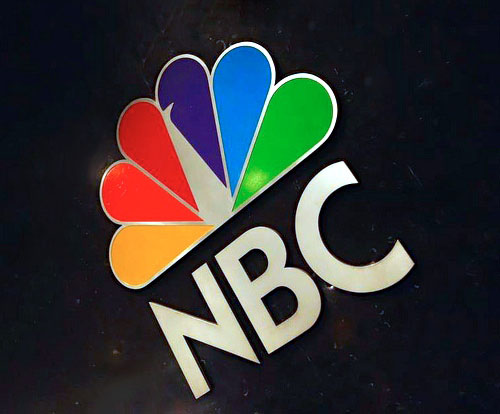Many of us love TV but don't know enough about the industry to even think about capitalizing on an investment opportunity. Today we're taking a look inside the business of the boob tube, clearing up industry jargon and breaking down the moneymaking side of television.

Networks and ticker symbols
Before we buy any one stock we need to know what our opportunities are. Let's start with "The Big Four," the phrase used to identify the four major broadcast networks:
|
Network |
Proper Name |
Operator |
|---|---|---|
|
ABC |
American Broadcasting Company |
Disney (DIS 1.19%) |
|
CBS (CBS +0.00%) |
CBS Corporation | |
|
Fox (FOX +0.00%) |
Twenty-First Century Fox | |
|
NBC |
National Broadcasting Company |
Comcast (CMCSA 0.07%) |
These networks are each other's chief competitors when it comes to advertising revenue. It's important to note that most television networks are just a single component of a media conglomerate. ABC, for instance, is part of Disney; NBC is a subsidiary of Comcast. Fox, while once included as part of News Corporation stock, now trades separately under its own ticker symbol. Its business includes the company's film and television units . Even the cable networks weave themselves into this complicated web as CBS Corp also includes cable broadcaster Showtime, and HBO is part of Time Warner Inc.

Where do profits come from?
Premium channels like HBO and Showtime derive profits from subscriptions as well as sales of DVDs. This is an especially lucrative operation for HBO, which owns all of its properties outright, compared to Showtime, which only owns about half of its content. With about 127 million subscribers worldwide, HBO generated revenue of about $4.9 billion in 2013 .
When a network like HBO doesn't have to answer to advertisers, it's able to deliver all the sex and violence its viewers want. But for our Big Four network broadcasters who can't play that game, advertising revenue is the real bread and butter.
Advertising revenue
Television ads are sold in 30-second spots. There are two chief methods for advertisers to buy airtime: the "upfronts market" and the "scatter market."
"Upfronts" take place every spring in New York City. Here, networks sell the majority of their ad space, typically at a rate lower than the space sells in the fall, after shows have aired.
The table below indicates estimated advertising revenue from May 2013's upfront markets:
|
Network |
Total Sales (in billions) |
|---|---|
|
CBS |
$2.5-$2.75 |
|
NBC |
$1.9-$2.0 |
|
ABC |
$2.0-$2.2 |
|
FOX |
$1.78-$1.79 |
Source: Variety.
These upfront sales are not necessarily set in stone. Instead, advertisers are committing to spending a certain amount of money at the networks during the coming television season. If a show doesn't meet the viewership numbers that the network promised to advertisers, networks will air what are known as "make-goods" or free or reduced-priced commercials . Additionally, if a show is canceled advertisers can pull their money all together.
Last year, the Big Four sold between 75%-80% of their total commercial inventory at May's upfronts . The other 20%-25% is reserved for the scatter market, which refers to sales that take place after fall premieres. The scatter market allows advertisers to have a better idea of what shows are performing well, but it also gives networks the opportunity to charge more for top-performing shows.
So how are ad prices determined?
Networks dictate rates for their 30-second time slots. The rate is knows as CPM, which stands for the cost per reaching 1,000 people (M is the Roman numeral for one thousand ). Each sale comes with a negotiation, but advertisers do expect the networks to raise rates each year .
Here are a few examples of how much a 30-second ad sold for at 2013's upfronts . Note that the numbers are directional estimates and not final figures:
|
Show |
Network |
Average Price |
|---|---|---|
|
The Big Bang Theory |
CBS |
$326,260 |
|
Parks and Recreation |
NBC |
$82,000 |
|
American Idol |
FOX |
$355,946 |
|
Grey's Anatomy |
ABC |
$206,075 |
|
Sunday Night Football |
NBC |
$570,000 |
Source: AdAge
If there was any doubt how important football is to the television business, this chart dismisses that notion handily.
Ratings
Naturally, shows with the highest ratings will have the highest prices for a 30-second spot.

Ratings are calculated by The Nielsen Company based on the viewing habits of 20,000 homes deemed representative of U.S. viewers .
Sometimes ratings are reported clearly in millions of viewers, but more often they're listed as percentages. Household ratings are expressed as two numbers separated with a slash. When a program reportedly earns a "3.5/6" in a night, it means that 3.5% of total U.S. households (with televisions) tuned in to the program and 6% of households that were watching television at that time slot were watching that particular show. The second number, in this case the 6, is also known as a "share" of the market.
Ratings can also be indicated by demographic. Advertisers are most interested in individuals 18-49 (this bracket is often known as "the demo"), so if a show is listed as 3.5 in adults 18-49, that means 3.5% of viewers in that age range were watching the show.
Here are samples of ratings from Thursday, April 17 :
|
Show |
Time |
Network |
18-49/Share |
Total in Millions |
|---|---|---|---|---|
|
The Big Bang Theory (repeat) |
8:30pm |
CBS |
2.7/9 |
10.91 |
|
Parks and Recreation |
8:30pm |
NBC |
.9/3 |
2.39 |
|
American Idol |
9:00pm |
Fox |
1.9/6 |
7.97 |
|
Grey's Anatomy |
9:00pm |
ABC |
2.6/8 |
8.45 |
Source: The Nielsen Company
We see here that Parks and Recreation is no competition for The Big Bang Theory, even though it was a repeat episode. This also helps to explain why the estimated ad sales for Parks and Rec were so low in our previous chart. Critical acclaim means nothing in the world of television advertising if you don't have the viewership to back it up.
Bottom line
These are the basic terms and metrics behind broadcast television revenue. Investors interested in buying media stocks can use the information to evaluate the performance of these players after the upfronts results are released this May.